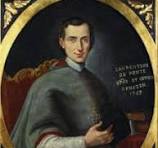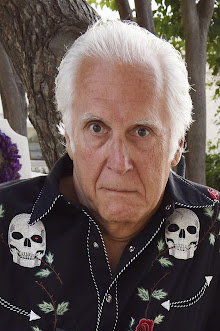Annamaria on Monday
My blog today is inspired by a splendid performance, this past Friday, of one of my two most favorite operas - Mozart's The Marriage of Figaro. Mozart gets the credit and very rightly so, but he could not have done it without a libretto, and the person named in my title is the guy Wolfgang Amadeus chose. He could not have picked a better guy. Or such a seemingly unusual one.
By the time he met Mozart, Lorenzo da Ponte was 35 years old and carried a wild collection of identities. Born and named Emanuele in the Republic of Venice in 1749, he was raised as Jewish until his father converted himself and his sons to Catholicism so that he could marry a Catholic woman. The priest who baptized Emanuele gave him the name Lorenzo and put him on a path to become a Catholic priest.
When Lorenzo was ordained in 1773, he was also a Professor of Literature and had begun writing poetry in Latin and Italian, including a pean to wine. Pretty soon, he had taken a mistress, fathered two children, and by 1777 became best friends with Casanova. Yes, that Casanova - Giovanni, a seducer so successful that his name became synonymous with that activity.
It only took about two years for Lorenzo to become equally notorious. The Venetians threw him out and told him not to come back for fifteen years. He went over the boarder to Austria, where he eked out a living as a writer in the employ of various noblemen, eventually making his way to Vienna and the circle of Antonio Salieri. (Fans of the play Amadeus will recognize Salieri as the mediocre composer who envied and resented Mozart.). Da Ponte soon became court poet and librettist.
Mozart and Da Ponte were well matched as collaborators - brilliant in skills and creativity, but also irreverent and impish. Their first collaboration - Le Nozze di Figaro, brings out those tendencies to great effect.
Like Chaucer and Shakespeare, Da Ponte took inspiration for his plots from other works, but he made them something completely new. The Marriage of Figaro and their second collaboration Don Giovani are widely considered the greatest operas ever written. Figaro is one of the the most frequently performed world wide. And why not? It is hilarious and gorgeous at the same time. But it also ends with the philandering Count of Almaviva getting his comeuppance.
Da Ponte's libretto for their second collaboration, Don Giovanni seems to have come right out of Da Ponte's friendship with Casanova. Unlike the comic Figaro, the rake Don Juan is condemned to hell in the last scene of the opera. I get the chills just thinking about it.
After Mozart, Lorenzo da Ponte went to Trieste and eventually to London where he met Nancy Grahl, the daughter of a Jewish chemist. They never married but they stayed together through thick and thin and raised their five children.
On the verge of bankruptcy in 1805, they fled to the U.S. In New York, Da Ponte became a teacher of Italian at Columbia College and founded the first opera company in the United States. In 1825, he produced a performance of Don Giovani, the first in the new world.
In 1833, at age eighty-four, he founded the first purpose built opera theater in the United States. Unfortunately, one of the things he had in common with Mozart was a total lack of business sense. Before long he had to sell his opera house, but its company went on to become the New York Academy of Music and the foundation of the Metropolitan Opera, where I had the pleasure of seeing a new production of Mozart's and Da Ponte's masterpiece, The Marriage of Figaro. Click to take peep.
Da Ponte died in NYC in 1838, and he was originally buried in a Catholic cemetery on 11th Street. When that part of the street was paved over, his remains were moved to Calvary Cemetery in Queens in 1909. A monument to him is still there and visited by New Yorkers in his honor every year on his birthday - January 27. As long as there is opera, he will never be forgotten.























What a fascinating story! I knew little about the librettist - certainly not that he ended up in NYC - and obviously should. Thank you!
ReplyDeleteFrom AA: I am so glad you liked it, Michael. I learned about this ending his days in NYC many years ago, because someone I met went to his birthday gathering. In researching this blog, I found out that his original grave was on East 11th Street, the street I live on. Now I feel as if there might be a molecule or two of Da Ponte around when I walk down my street
DeleteThank you! I love (what little I know of) Le nozze di Figaro & Don Giovanni but had no idea Da Ponte ended up in NYC. Please salute those memory molecules for me next time you go walking!
ReplyDelete